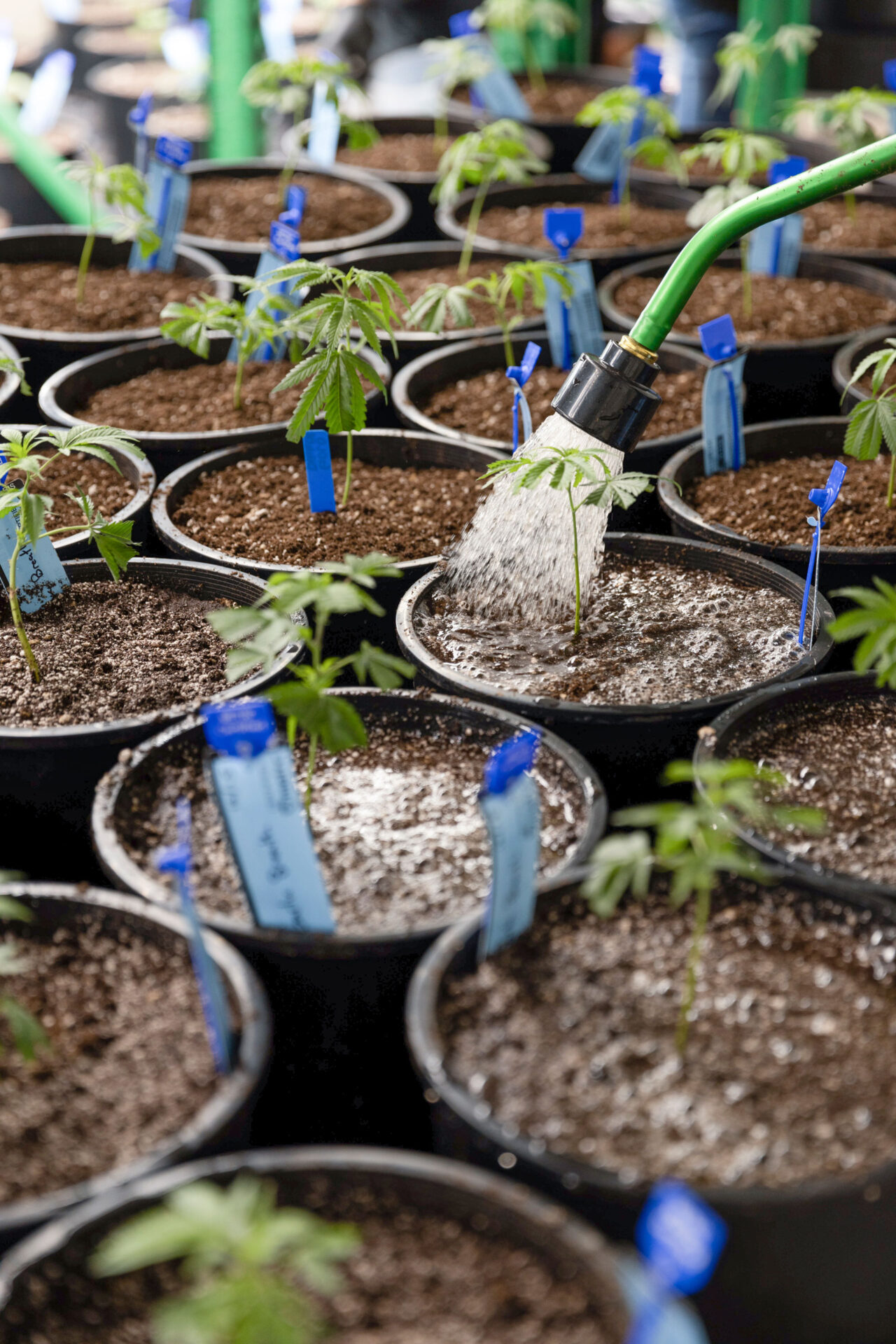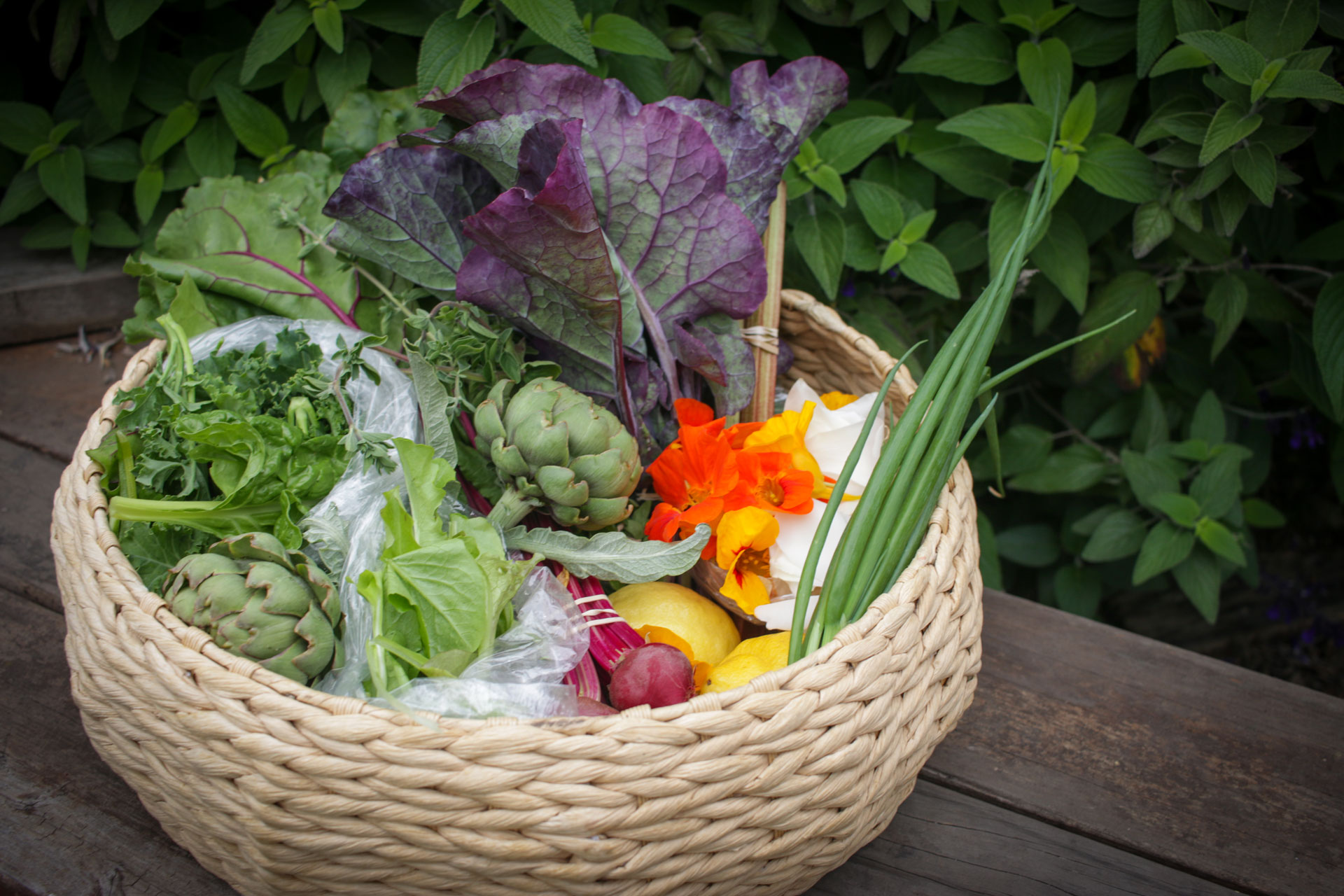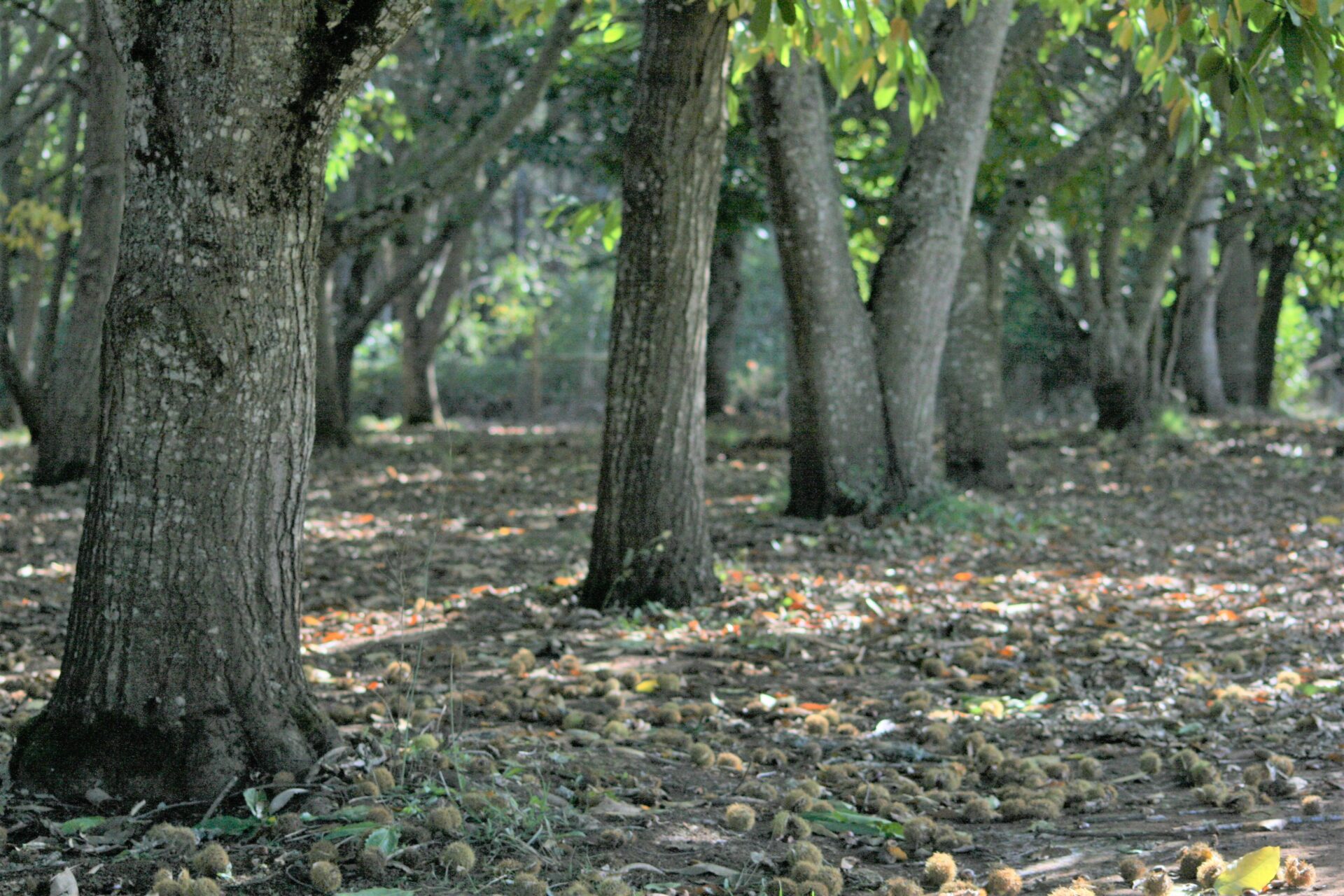In 2014, a small group of investors bought Queener Farm, a 40-acre plot in Scio, Oregon with over 115 heirloom and modern varieties of apple trees. Jeannie Berg and Chris Homanics operate the orchard. Transitioning a 2,000-tree heirloom apple orchard from conventional to organic has proved a challenge, although after five years, Jeannie and Chris are beginning to feel like they’re getting a handle on it. For the first year and a half they took a hands-off approach, letting the orchard sit and heal.
The previous farm managers sprayed conventional herbicides. “It took three years to get anything to grow under the trees,” Jeannie said. “We’ve had to do some things slowly over time.”
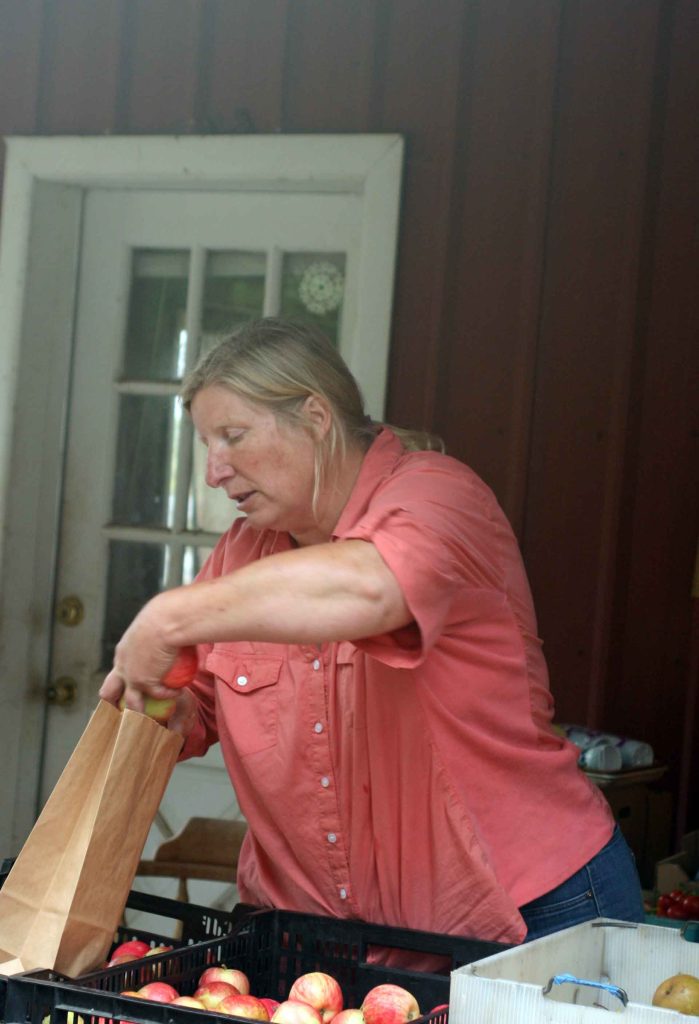
Farming Practices and Challenges
As Jeannie and Chris have discovered, managing such a diverse orchard is a true test of their skills. “It’s a lifetime project. Something you do over time,” Jeannie said about learning the traits of each tree. With the different varieties and the different rootstocks, she figures there are about 2,500 variables on the farm.
For the operators, rainy days and hot days create more work. To prevent sunscald on days over 95 degrees, when the sun is hitting the orchard at a direct angle, Chris and Jeannie use backpack sprayers loaded with a product called Surround. It’s an organic clay coating that they spray on the shiny apple varieties. It covers the honey crisp apples with white splatters. When honeycrisp are fully sugared, they are more susceptible to sunscald than some of the other varieties.
Without protection, super-hot days can cook the apples on the tree. The inside of an apple can reach 120 degrees in direct sun. “It turns them brown, starts to rot,” Jeannie said. After harvest, they will wipe the white splatters of Surround off the apples. If the weather is expected to be hot for only a short time, a spray of cool water is enough to prevent sunscald.
What can be even more damaging to apple trees and their fruit than hot days are wet days. “The Willamette Valley is so damp, fungal diseases are really the challenge. Hours of dampness leads to lesions,” Jeannie explained. But she and Chris try to stay away from copper as much as possible, even though it’s a widely-used organic fungicide. “Copper is quite toxic to the operator,” she said. When she and Chris first started working the orchard, the soil tests came back high in copper. For tree health, they rely largely on potassium bicarbonate, and yucca extract. “It’s not cheap,” Jeannie noted about the yucca. But it’s safe. Safe enough to even taste. She describes it as being like “a molasses that smells of tequila.” Yucca is reputed to help plants utilize water more effectively and help protect them against stress.
Jeannie and Chris also use some extracts of teasel and knotweed. Knotweed—yes, the obnoxious, invasive weed—is anti-bacterial, anti-cancer and anti-fungal, according to Chris. The extract has a 48-hour effective window. They use it when there is going to be more than 10 to 12 hours of moisture on the trees to fend off fungal issues.
For fertilizer and orchard clean up assistance, Chris and Jeannie release a flock of chickens into the orchard. The chickens eat larvae and debris and recycle it into fertilizer. Other fertilizer comes in the form of kelp, fish and organic milk mixtures.
To fight coddling moth (apple worm), Chris and Jeannie apply virus bodies of cydia pomonella, plus half-a-billion nematodes. In the style of European organic orchardists, Chris and Jeannie start spraying the biological control early in the season. They use low doses and spray weekly. It’s expensive, Jeannie says, but it kills the coddling moth without harming the pollinators.
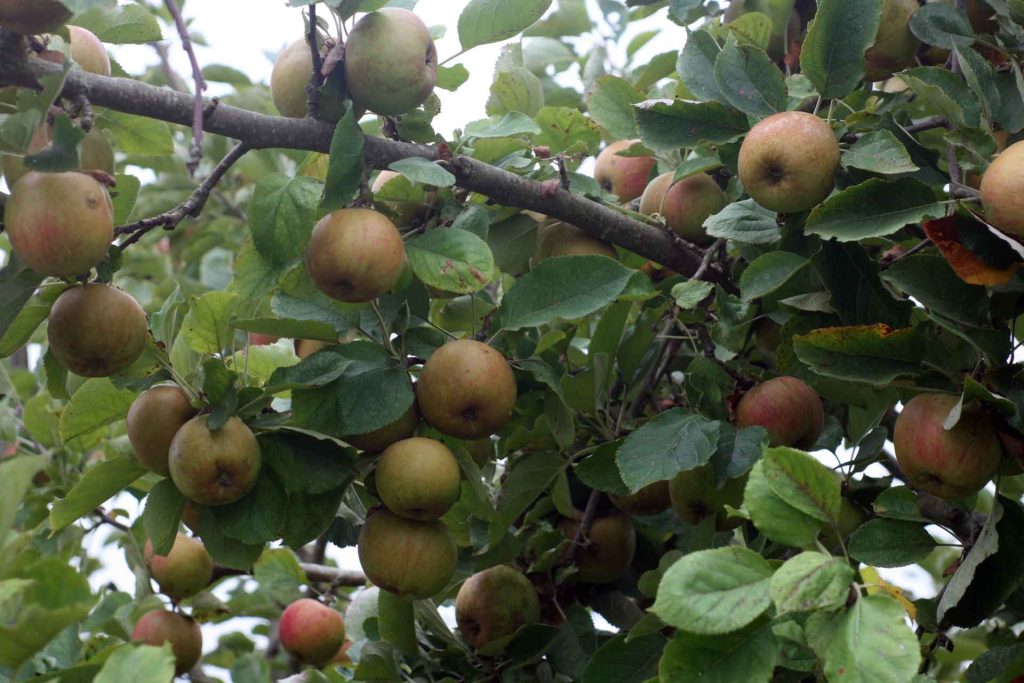
Taking Care of the Birds and the Bees
To protect the pollinizers, which are so crucial to trees setting fruit, Jeannie and Chris carefully time mowing of the orchard floor. “Spacing mowing was super key to pollinators,” Jeannie said. While dandelions and wildflowers bloom on the orchard floor, Chris and Jeannie don’t mow. As the apple trees begin to blossom, they mow, which pushes the pollinizers up into the trees. By the time the trees stop blooming, the orchard floor has re-bloomed. Pollinizers can then move back down to the flowers for food.
A retired entomologist came out to the orchard to look at the insects. “He found things here that were rare,” Chris said. Besides an array of bees and hover flies, Chris has noticed bird species in the orchard, such as killdeer, that weren’t there when he and Jeannie first took over operations.
Before Queener Farm, Jeannie managed a CSA (Community Supported Agriculture) vegetable farm in Independence, Oregon, where she still lives.
Future of the Farm
Chris and Jeannie are planning a new orchard. “We’ve realized a couple things,” Jeannie said. The rows in the established orchard are planted north to south. “The morning side dries off faster than the afternoon side,” she said. They will plant the rows in the new orchard east to west to alleviate that problem. The winds, which usually blow east to west, would create more air flow. Also, east to west planting would offer better sun positioning.
Out of the more than 100 varieties currently growing in the orchard, Jeannie said she’d choose about 70 of those to keep. They’ve already done a lot of top grafting to some of the trees which are most susceptible to disease. Those trees just aren’t cost effective to grow organically, Jeannie said. Some of them aren’t even producing. They’ve hired a grafter with 40-years of experience. He cuts 2/3 of the tree away and grafts a new variety onto the trunk. They had 200 trees grafted in 2014, 150 in 2015 and 50 more in 2018. “We could probably do another four hundred,” Jeannie said.
A 15-acre chunk of Queener Farm is leased to a farmer who grows organic hazelnuts. “It makes for a more interesting and diverse farm,” Jeannie said.
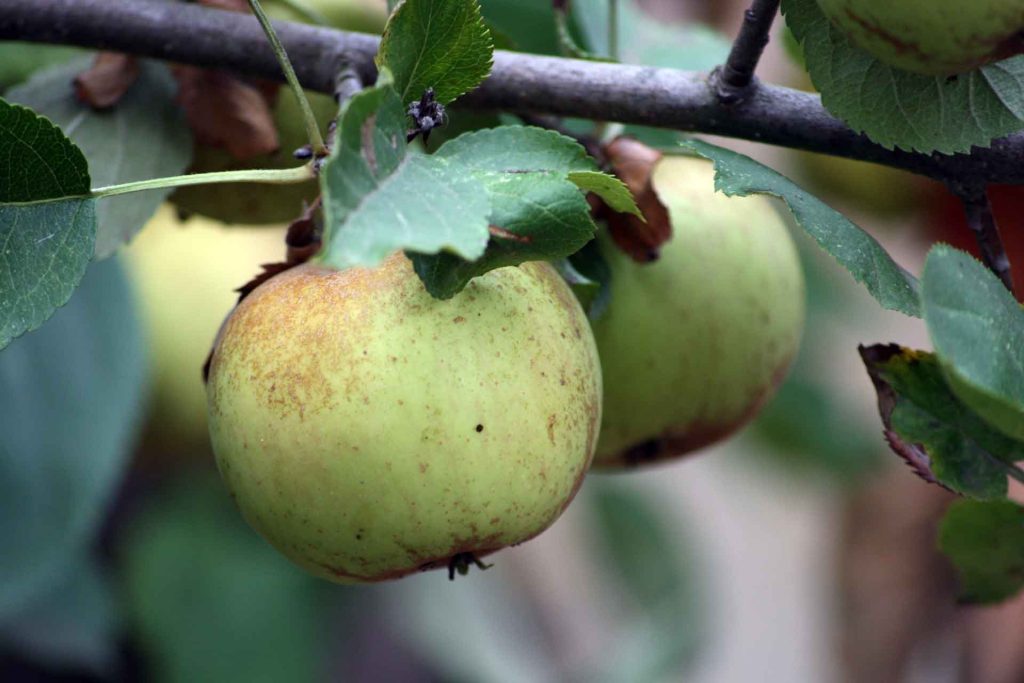
Community Farming
Chris is a plant breeder and a seed saver, as well as a board member of the Fruit Growers Society. He’s also involved with the Dry Farming Collaborative, which is doing work with dryland tomato, squash, melon and potato varieties. Chris was orcharding up near Suquamish, Washington, before heading to Scio. He calls what he and Jeannie are doing at Queener Farm “ecological orcharding.”
The farm is a bustling community hub on Saturdays, the only day it’s open to the public. It’s a time to catch up with local happenings and news. Some of it is bad news: The Stayton cannery is “restructuring.” Hundreds of local employees are facing a lay-off, perhaps permanently. Some of the row-crop farmers are left stuck with large stands of unharvested corn and no more cannery market. But there’s also good news: The organic hazelnut farmer across the road swept his 10-year-old orchard for nuts the day before.
The customers tend to arrive at the farm in small packs. Jeanie greets one group of you-pickers after another. She hands customers a sheet of paper that explains blemishes they may see on the organically-grown apples. “Leave apples in bins that have flaws you’re not comfortable with,” she instructs them. She and Chris will later press the flawed apples into cider.
Jeannie helps Pat Fyke, a handicapped customer, pick out some honeycrisp apples to eat fresh, and two perfect heirloom Belle de Bokoop apples for Pat to cook whole with a pork roast.
Queener Farm offers more than apples. In season, they sell red, black, white and pink currents, as well as red and green gooseberries, pears, heirloom squash and vegetables. The farm is open to the public June through Thanksgiving. Locals are invited to join an apple club. Members pick up their boxes of apples at the farm every other week throughout the growing season. The farm delivers bulk orders of heirloom apples and seasonal produce to local restaurants, co-ops, and small grocery stores in Eugene, Salem and Portland.
Farming Philosophy
Chris, who lives at the farm, really likes the idea of creating community—chatting, sharing ideas, and generally getting to know the neighbors. “Everyday happenings are important,” Chris said.
He’s been pleased to observe the influx of younger people interested in farming. He thinks it’s great when neighbors and customers bring their children to the orchard. The children enjoy looking for interesting rocks and insects. Chris enjoys watching them horse around and play. He loves to hear the sound of their exuberant laughter.
“We’re raising a community,” Chris said about the farm. “It’s the heartbeat of the earth kind of idea.”
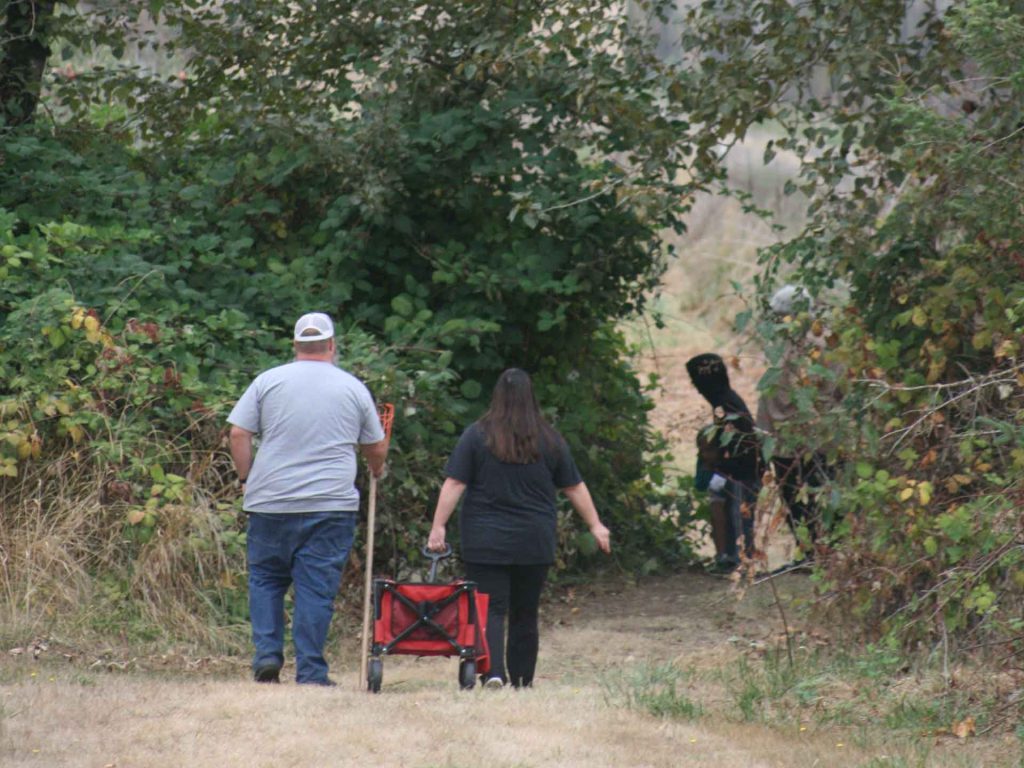
Favorite Varieties
With approximately 25,000 named varieties of apples in the world, it’s hard to choose favorites, but Chris and Jeannie, who are always looking for the very best apples for organic growing, have managed to come up with this partial list:
Belle de Bokoop is a variety that comes up in conversation with Chris and Jeannie over and over. It’s a tart, greenish-yellow skinned apple. Great for baking. The trees have a classic heirloom look.
Giant Red Russian Crab “Its flesh is blood red and bleeds like a beet,” Jeannie said.
Blairmont is one Chris mentions as a scab and coddling moth resistant variety.
Redfree is a PRI and co-op series apple. It comes from a disease-resistant breeding program cooperative among several universities.
Williams Pride tastes like strawberries, Chris says. “It has a very, very fruity note.”
Gruzhovaka of Moscow is a coddling moth resistant variety and stores well.
Spokane Beauty “Such a juicy, crispy apple,” Chris said. “It really is a beautiful apple.”


